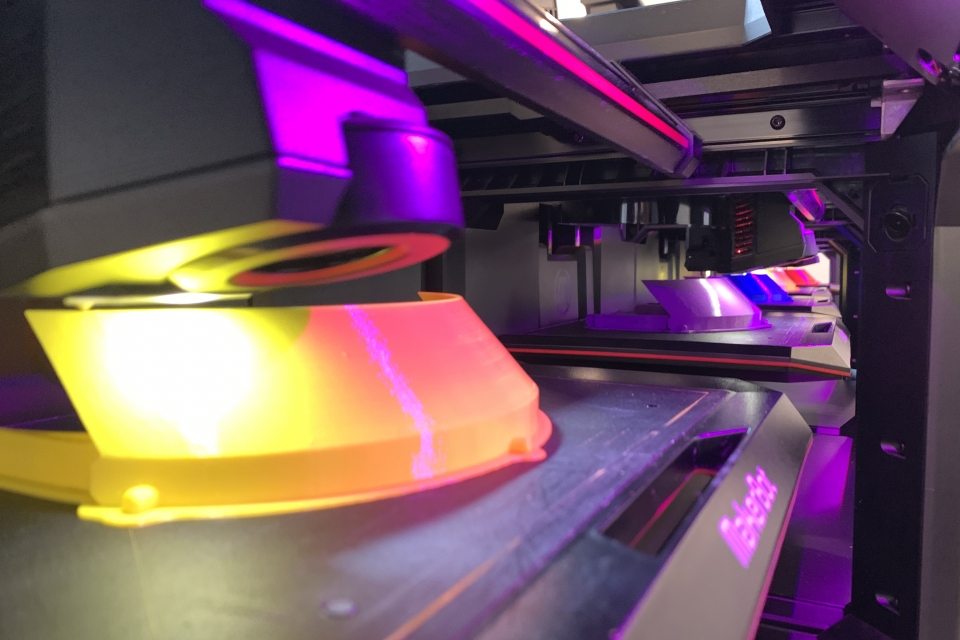Originally published April 6 on GWToday by Tatyana Hopkins
As hospitals cope with a shortage of personal protective equipment due to increased demand during the COVID-19 pandemic, groups of students and faculty members from across disciplines at the George Washington University have come together to find immediate responses to the needs of health care professionals at GW Hospital.
“Across the university, across disciplines and across programs, there's a group of really energetic people who are hustling to deal with COVID-19,” said James Huckenpahler, an adjunct digital lab instructor in the Corcoran School of Art and Design.
He worked with a group of GW community members from various schools and departments—including the School of Engineering and Applied Science, GW Hospital, the GW Innovation Center (GWIC), student organization George Hacks and others—who collaborated to develop and manufacture much needed protective gear and protocols for workers at GW Hospital.
Mr. Huckenpahler runs the group’s 3-D printing farm, which worked to produce 200 face shields for GW Hospital staff in just under a week, to ensure everyone at the hospital who needs one gets the protective equipment.
The team also includes Alex Cullen, an emergency medicine instructor in the School of Medicine and Health Sciences; Neal Sikka, an associate professor of emergency medicine; and Konstantin Mitic, a graduate student studying biomedical engineering.
After field testing four prototypes, including one developed by an engineering student, they decided to modify a model from the National Institutes of Health, Mr. Huckenpahler said.
“Essentially, we’re printing a plastic visor, then attaching a piece of clear plastic—literally the design calls for overhead projector plastic sheets that are punched with a three-ring-binder punch—and adding a rubber band to secure the whole thing,” Mr. Huckenpahler said. “The part we print is more than single-use, and the clear plastic sheet can be replaced as needed.”
The team produced about 40 shields a day since last Tuesday to complete the project on Sunday.
The Corcoran’s 3-D printing lab, which used 12 of its available 3-D printers for the projects, is the largest of its size on campus, said Mr. Mitic, a GWIC fellow.
“We don't have any other facility on campus that has that capacity for this scale of mass production,” he said. “That's only in Corcoran.”


